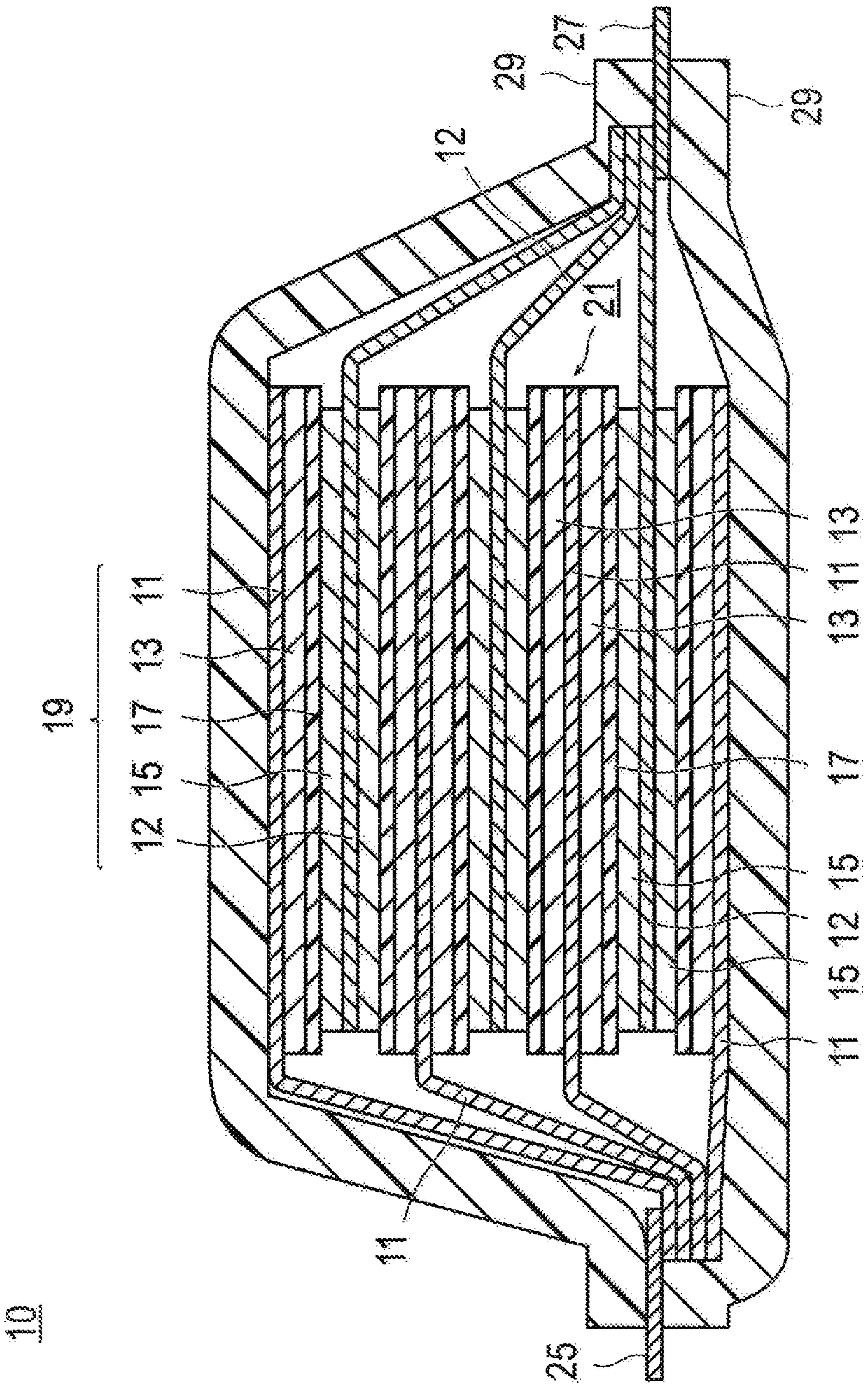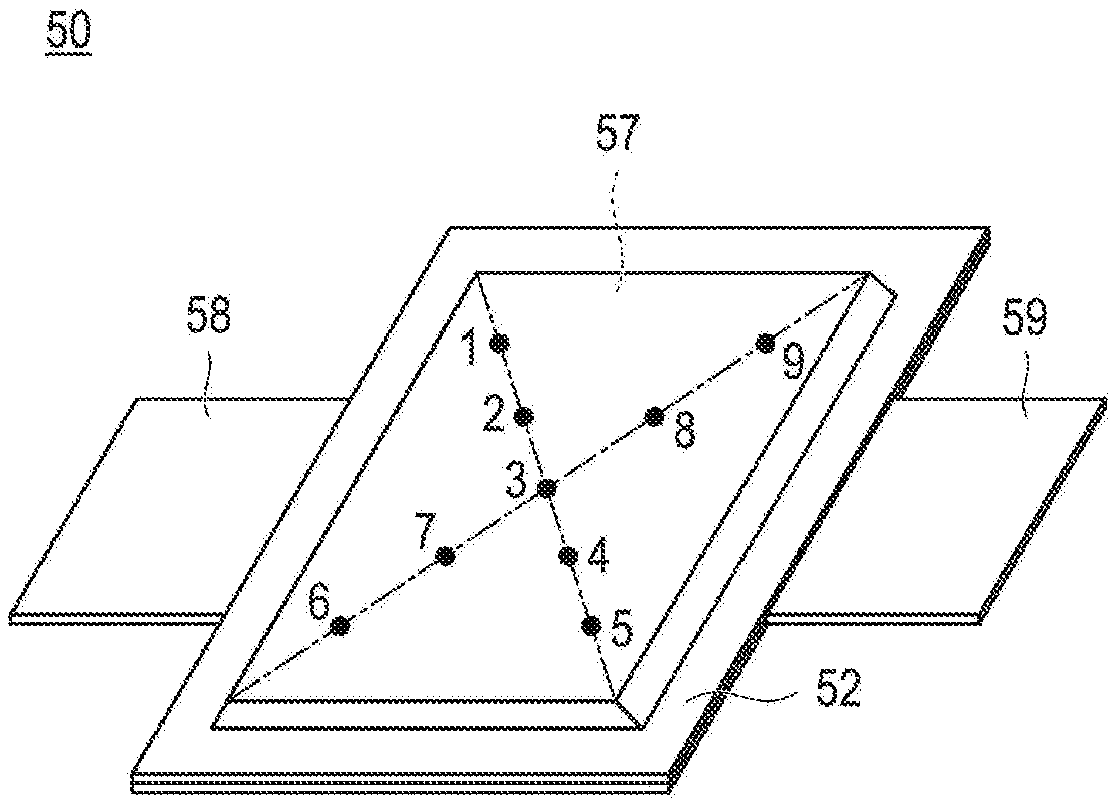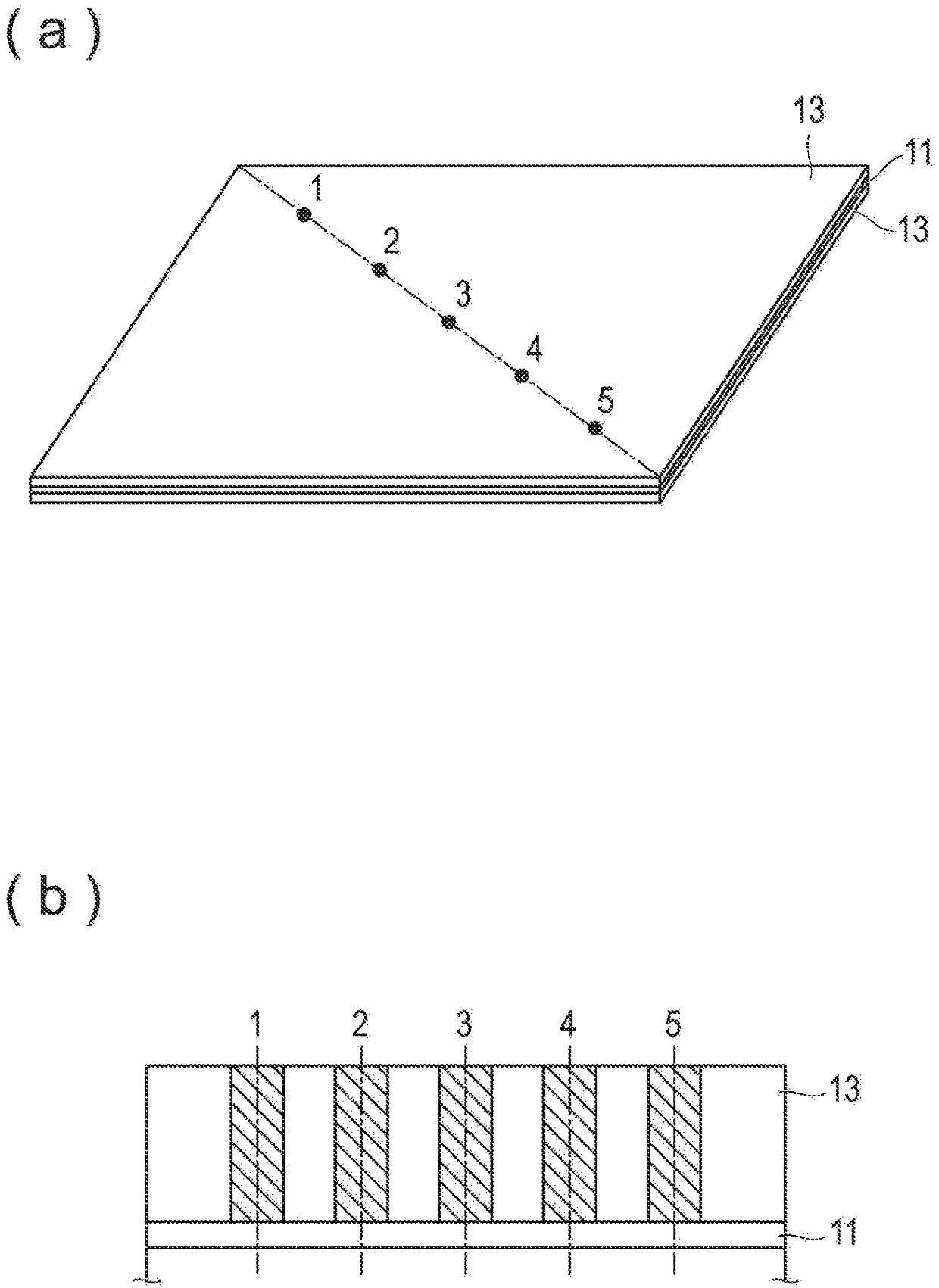Non-aqueous electrolyte secondary battery
A non-aqueous electrolyte, secondary battery technology, applied in non-aqueous electrolyte batteries, non-aqueous electrolyte battery electrodes, secondary batteries and other directions, can solve the problems of large expansion and contraction, reducing electrode cycle life and other problems
- Summary
- Abstract
- Description
- Claims
- Application Information
AI Technical Summary
Problems solved by technology
Method used
Image
Examples
Embodiment
[0267] Hereinafter, although an Example and a comparative example are used and it demonstrates in detail, this invention is not limited to the following example.
[0268] 1. Fabrication of positive electrode
[0269]94% by mass of NMC composite oxide as a positive electrode active material, 3% by mass of acetylene black as a conductive additive, 3% by mass of polyvinylidene fluoride (PVDF) as a binder, and N - Mixing an appropriate amount of methyl-2-pyrrolidone (NMP) to prepare a positive electrode active material slurry. The obtained positive electrode active material slurry was coated on the surface of an aluminum foil (thickness: 20 μm) as a positive electrode current collector, dried at 120°C for 3 minutes, and compression-molded with a roll press to produce a positive electrode with a rectangular planar shape. active material layer. A positive electrode active material layer was also formed on the back surface in the same manner, and a positive electrode in which posit...
PUM
 Login to View More
Login to View More Abstract
Description
Claims
Application Information
 Login to View More
Login to View More - R&D
- Intellectual Property
- Life Sciences
- Materials
- Tech Scout
- Unparalleled Data Quality
- Higher Quality Content
- 60% Fewer Hallucinations
Browse by: Latest US Patents, China's latest patents, Technical Efficacy Thesaurus, Application Domain, Technology Topic, Popular Technical Reports.
© 2025 PatSnap. All rights reserved.Legal|Privacy policy|Modern Slavery Act Transparency Statement|Sitemap|About US| Contact US: help@patsnap.com



